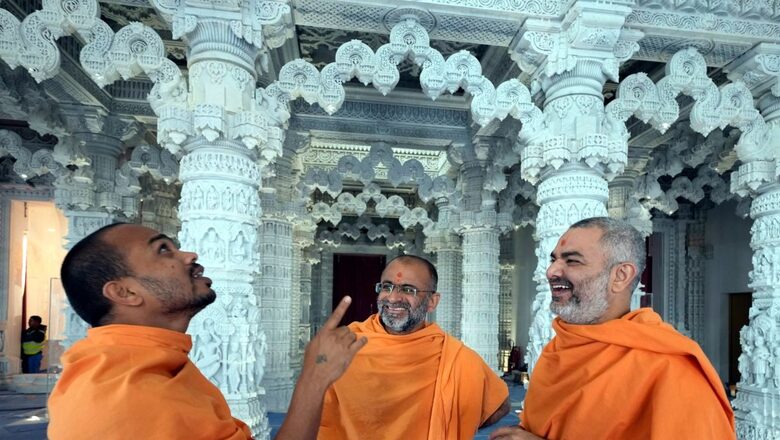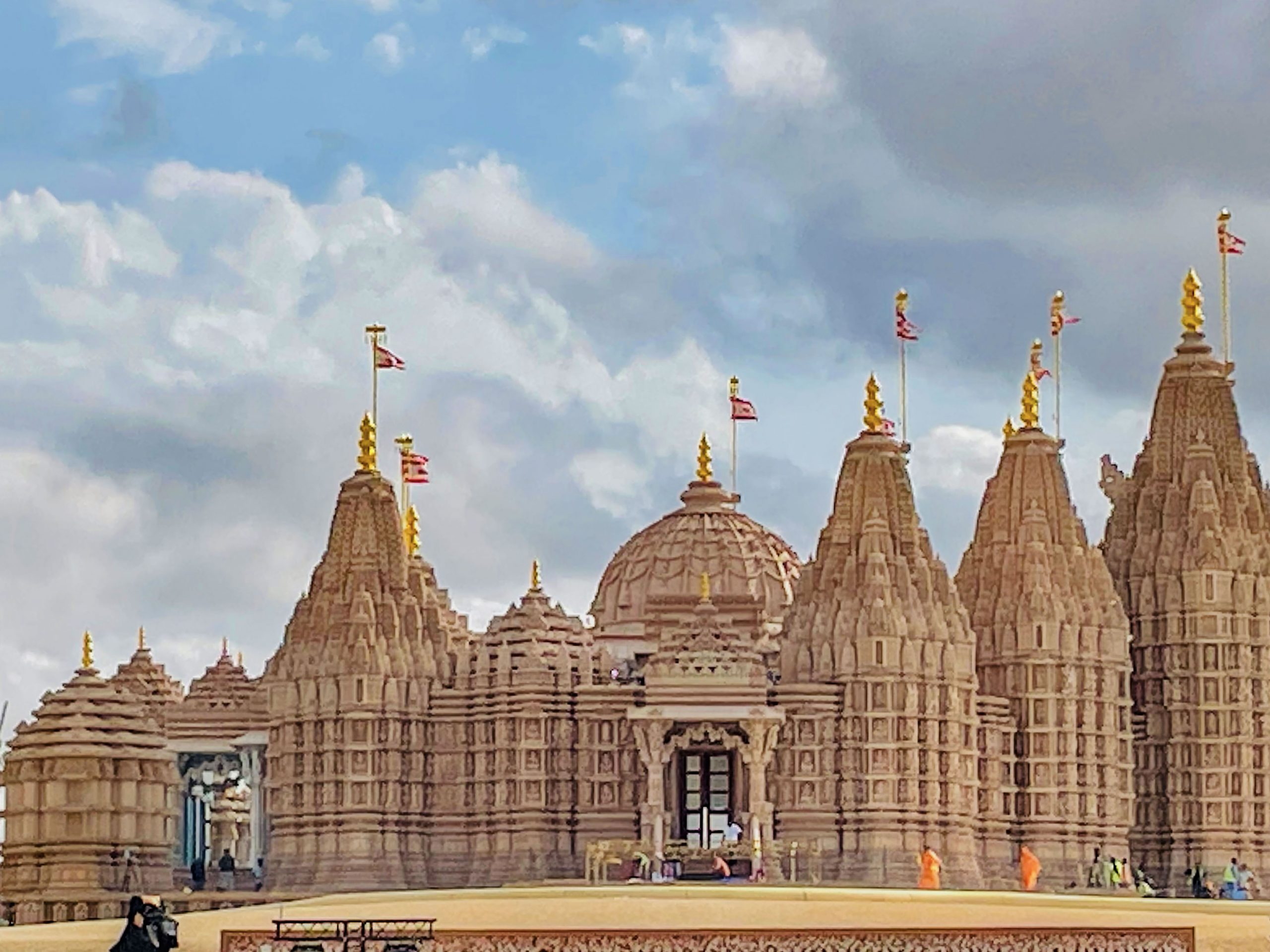
views
Prime Minister Narendra Modi will inaugurate a Hindu temple in Abu Dhabi, UAE, today. The BAPS temple is considered an architectural marvel, with contributions from different parts of India.
In October 2022, Dubai’s Temple was inaugurated by UAE Minister of Tolerance HH Sheikh Nahyan bin Mubarak Al Nahyan.
So, how does the temple look from inside?
Deities and Shrines
There are seven shrines in the temple, all of which are devoted to different Indian Gods and Goddesses from the north, east, south and west. Lord Ayyappa, Lord Tirupati Balaji, Lord Jagannath, Lord Krishna and his wife Radha, Lord Hanuman, Lord Shiva and his wife Parvati and children Ganesh and Karthik, and Lord Ram and his wife Sita are among the deities. Beautiful carvings that depict the lives and teachings of the deities adorn each shrine.
The temple entrance has eight idols, which symbolise the eight values key to Sanatan Dharma.

Dome of Harmony and Peace
The Dome of Harmony showcases five natural elements – water, fire, air, earth and space. There are carvings of animals such as horses and camels that represent the UAE. A Wall of Harmony, one of the largest 3D-printed walls in the UAE, features a video showcasing key milestones of the temple’s construction.
Varanasi Ghat
According to temple authorities, an amphitheatre in the shape of a ghat has been built on the side where the water from Ganga flows. “The idea was to make it resemble the ghat of Varanasi where the visitors can sit, meditate and get transported mentally to ghats back in India. When visitors walk in they will see two streams of water that symbolically represent the Ganga and Yamuna rivers in India. A beam of light to represent the river Saraswati will be directed from the temple structure to form ‘Triveni’ Sangam,” said Vishal Patel, a lead volunteer at the iconic temple.
Other Features
The temple was judged the Best Mechanical Project of the Year 2019 at the MEP Middle East Awards, and the Best Interior Design Concept of the Year 2020.
Around 96 bells and gaumukhs are installed around the path leading to the temple. These 96 bells are a tribute to Pramukh Swami Maharaj’s 96 years of life. Nano tiles have been used, which will be comfortable for visitors to walk on even in the hot weather.
On the top left of the temple is a stone carving of the scene of Pramukh Swami Maharaj envisioning the temple in Abu Dhabi in 1997.
More than 350 sensors have been attached to the mandir and 100 sensors are located in the foundation to collect data on temperature fluctuations, pressure changes and seismic activity.
Besides 15 value tales from Indian civilisation, stories from the Maya civilisation, Aztec civilisation, Egyptian civilisation, Arabic civilisation, European civilisation, Chinese civilisation and African civilisation have also been depicted.
The temple has been built keeping in mind the ancient Hindu ‘shilpashastras’. The exterior of the temple is made of pink sandstone from Rajasthan, and interior from white marble. The pillars carved from white marble by more than 2,000 artisans from Gujarat and Rajasthan have designs of peacocks, horses, elephants, camels and moons.
The complex includes a visitor’s centre, prayer halls, exhibitions, learning areas, sports area for children and youth, thematic gardens, water features, a food court, book and gift shop and other facilities.
Sadhu Brahmaviharidas has revealed the rich symbolism used in the temple’s design. Adorned with seven spires, the Mandir symbolises gratitude towards the unity of the seven emirates, reflecting the harmonious relationship between India and the UAE. The seven spires also pay homage to seven important deities, underscoring the interconnectedness of cultures and religions. “Normally, our temples are either one spire, three, or five, but come here, the seven spires express our gratitude to the unity of the seven emirates. But at the same time, the seven spires enshrine seven important deities,” he said.
What is BAPS?
BAPS is an acronym for Bochasanwasi Shri Akshar Purushottam Swaminarayan Sanstha, represents a socio-spiritual Hindu faith rooted in the Vedas, pioneered by Bhagwan Swaminarayan (1781-1830) in the late 18th century and formally established in 1907 by Shastriji Maharaj (1865-1951), according to its website.
BAPS is built on the principles of practical spirituality, and addresses spiritual, moral, and social challenges in our society. With a global network of 3,500 centres, BAPS has received national and international awards, as well as affiliations with the UN.
During PM Modi’s two-day visit to the Gulf nation in 2015, the UAE allocated land for constructing a temple in Abu Dhabi. This visit held significant diplomatic importance, as Modi became the first Indian Prime Minister since Indira Gandhi to visit this strategically vital Gulf nation in 34 years. Modi thanked the UAE leadership on behalf of 125 crore Indians for their decision to build the temple, hailing it as a “landmark” move, according to various reports.



















Comments
0 comment